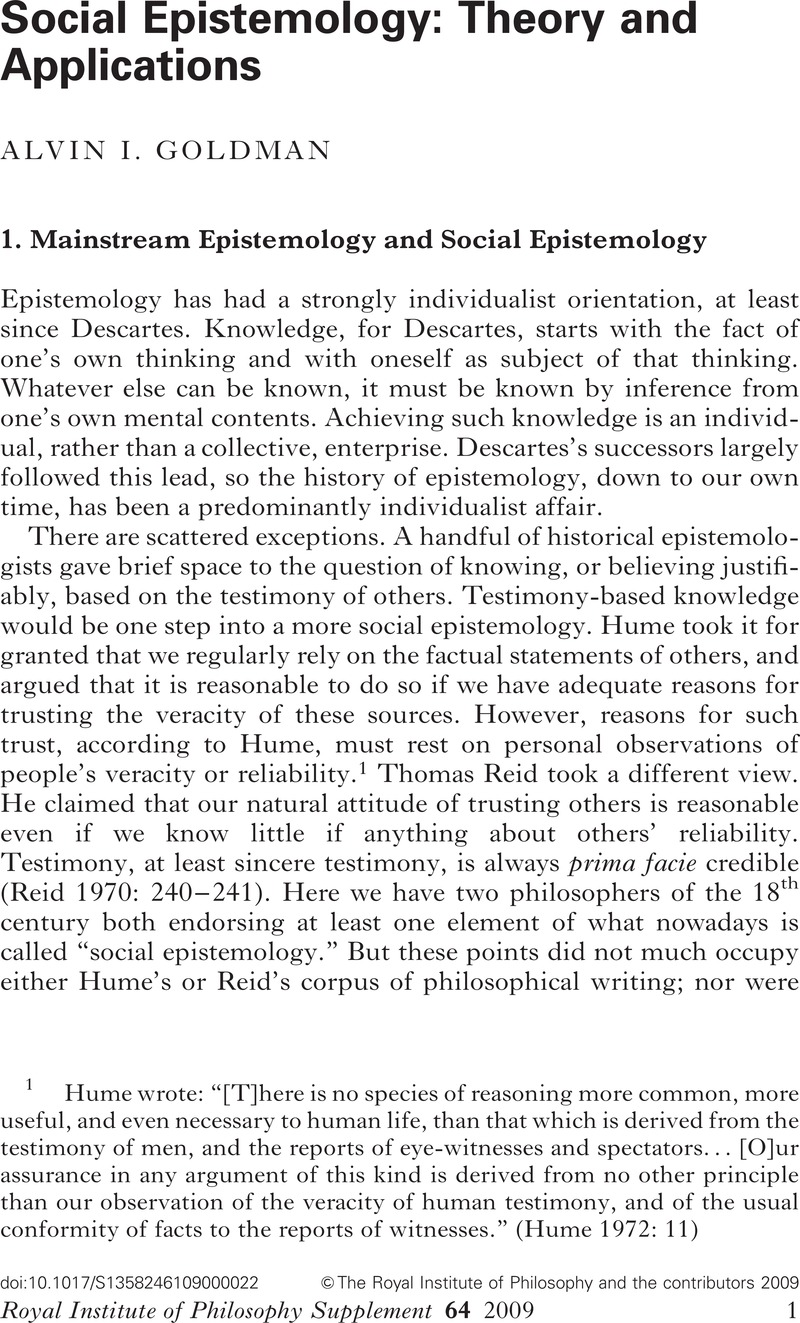Crossref Citations
This article has been cited by the following publications. This list is generated based on data provided by Crossref.
Dewitt, Aaron
2012.
GROUP AGENCY AND EPISTEMIC DEPENDENCY.
Episteme,
Vol. 9,
Issue. 3,
p.
235.
Blaauw, Martijn
2013.
THE EPISTEMIC ACCOUNT OF PRIVACY.
Episteme,
Vol. 10,
Issue. 2,
p.
167.
Buekens, Filip
and
Truyen, Fred
2014.
Experts and Consensus in Social Science.
Vol. 50,
Issue. ,
p.
213.
Gulick, Walter
2016.
Relating Polanyi’s Tacit Dimension to Social Epistemology: Three Recent Interpretations.
Social Epistemology,
Vol. 30,
Issue. 3,
p.
297.
Pili, Giangiuseppe
2019.
Intelligence and Social Epistemology - Toward a Social Epistemological Theory of Intelligence.
Social Epistemology,
Vol. 33,
Issue. 6,
p.
574.
Lassiter, Charles
2019.
Sham Epistemic Authority and Implicit Racial Bias.
Social Epistemology,
Vol. 33,
Issue. 1,
p.
42.
Royakkers, Lambèr
and
Hughes, Jesse
2020.
Blame it on me.
Journal of Philosophical Logic,
Vol. 49,
Issue. 2,
p.
315.
Poirier, Pierre
Faucher, Luc
and
Bourdon, Jean-Nicolas
2021.
Cultural Blankets: Epistemological Pluralism in the Evolutionary Epistemology of Mechanisms.
Journal for General Philosophy of Science,
Vol. 52,
Issue. 2,
p.
335.
Hodgson, Geoffrey M.
2022.
Donald T. Campbell on the institutions of scientific knowledge and the limits to interdisciplinarity.
Journal of Institutional Economics,
Vol. 18,
Issue. 6,
p.
969.
Ooi, Daryl
2023.
Hume's Social Epistemology and the Dialogue Form.
Episteme,
p.
1.
Lee, J. Y.
2023.
Partial Relationships and Epistemic Injustice.
The Journal of Value Inquiry,
Vol. 57,
Issue. 3,
p.
543.
Walczyk, Tomasz
2024.
Veritistic social epistemology and network communication problems.
Analiza i Egzystencja,
Vol. 67,
Issue. ,
p.
5.



